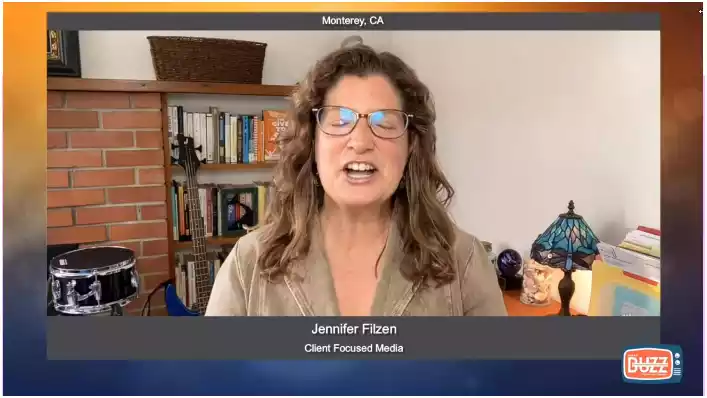Quality Assurance in Prior Authorization for Balancing Timeliness and Cost-Effective Care
Discover quality assurance in prior authorization for balancing timeliness, reducing delays and enhancing patient care. Learn about the strategies and benefits in our detailed analysis. Read more now!

Imagine navigating the complexities of healthcare without the confusion of insurance requirements, where patients can easily find answers to their most pressing questions. The frequent inquiry, does medicare require prior authorization, highlights the need for clarity in understanding medical coverage and services. This awareness empowers individuals to make informed decisions about their healthcare options, ensuring they receive the necessary treatments without unnecessary delays.
Let’s explore!
Table of Contents
Quality Assurance in Prior Authorization for Balancing Timeliness
 Quality assurance, in the realm of authorization (PA), plays a role in healthcare delivery, ensuring that patients receive the proper medications and treatments promptly, all while managing costs and upholding high care standards. Prior authorization is a cost containment strategy employed by health insurers to confirm the necessity of medications, procedures, or services before granting coverage. However, this process can be intricate and time-intensive, underscoring the importance of quality assurance measures for its efficacy. This piece explores the significance of quality assurance in authorization, delves into existing challenges, and presents strategies for enhancing the process.
Quality assurance, in the realm of authorization (PA), plays a role in healthcare delivery, ensuring that patients receive the proper medications and treatments promptly, all while managing costs and upholding high care standards. Prior authorization is a cost containment strategy employed by health insurers to confirm the necessity of medications, procedures, or services before granting coverage. However, this process can be intricate and time-intensive, underscoring the importance of quality assurance measures for its efficacy. This piece explores the significance of quality assurance in authorization, delves into existing challenges, and presents strategies for enhancing the process.
Significance of Quality Assurance in Prior Authorization
Safeguarding Patient Safety and Care
Quality assurance within authorization is critical for upholding safety and ensuring that prescribed treatments align with optimal clinical practices. By verifying the necessity and suitability of medications and treatments, quality assurance aids in averting potentially harmful interventions. This is especially crucial in cases involving high-risk medications that may pose side effects or interact with drugs.
Mitigating Healthcare Expenditures
A primary objective of the authorization procedure is cost control within healthcare. Approving treatments and medications can significantly reduce wasteful expenditures. Quality assurance ensures that the prior authorization (PA) process is carried out accurately and consistently, helping to prevent mistakes and inefficiencies.
Adherence to Regulations
Healthcare providers and insurance companies must comply with both state regulations, which often outline guidelines for the PA process. Implementing quality assurance programs assists organizations in staying within boundaries, thus avoiding penalties and legal issues.
Challenges Encountered in Prior Authorization
While the PA process offers advantages, it also presents obstacles such as burdens, care delays, and inconsistency in decision-making. Tackling these challenges through quality assurance practices is vital for enhancing the PA process’s efficiency.
Administrative Strain
The PA procedure can be demanding and administratively consuming, consuming time and resources for healthcare providers. Physicians and their staff are tasked with completing documentation for submission to insurance companies, which then evaluate the requests. This distraction from patient care can lead to frustration among healthcare professionals.
Care Delays
A critique of the PA process is its potential to cause delays in care. Waiting for approval can lead to interruptions in treatment that negatively impact outcomes. These delays can be minimized by ensuring an effective PA process through quality assurance measures.
Differences in Decision Making
Decisions regarding patient care may vary due to differences in the criteria employed by insurance companies or even among reviewers within the organization. This lack of uniformity can result in clarity and fairness in treating patients. Quality assurance is crucial for standardizing the process and attaining fair results.
Strategies to Enhance Quality Control in Prior Authorization

To boost the effectiveness of the PA process and its results, a range of tactics can be implemented as part of a quality control initiative.
Standardization
Standardizing PA criteria and procedures among providers and payers can decrease variability. Enhance the equity and efficiency of the system. This involves establishing evidence-based criteria for approving medications and treatments.
Training and Education
Ongoing training and education for healthcare providers and insurance personnel play a role in upholding standards within the PA process. This includes staying updated on modifications, new clinical findings, and best practices for documentation and communication.
Integration of Technology
Utilizing technology can simplify the PA process while boosting quality control. Electronic health records (EHRs) and PA software can automate steps in the process, minimize errors, and offer real-time updates on authorization request statuses.
Audits and Assessments
Routine audits and assessments of the PA process are crucial for pinpointing areas for improvement while ensuring adherence to standards. These evaluations should evaluate efficiency and effectiveness, covering decision accuracy and timeliness.
Involvement of Stakeholders
Engaging all stakeholders—including healthcare providers, payers, and patients—is key to a comprehensive approach to quality control.
Consistent communication and collaboration can help tackle issues, exchange tips, and ensure everyone’s requirements are considered.
I'm very thankful for Portiva who I know is looking after my practice while I'm gone the virtual assistants can manage prescription refills, documents they can triage patients and just kind of answer administrative questions and they can handle a lot on their own. But also, they're very good about contacting me if there's any emergency or anything I need to attend to. So I'm very thankful for Portiva they can help almost any provider almost anywhere and it really allows for some good work-life balance as I'm getting to experience right now at my family farm so I'm very thankful for Portiva and I'm very happy to use their services"

Board Certified Family Medicine Physician

Portiva's Virtual Medical Assistant - I have all the support I need. There's somebody checking my email, any patient messages. Patients are still able to schedule and handle any scheduling issues and any kind of billing that needs to still go through. Portiva hands handles it all for me. I have support i have somebody that I can access 24/7 pretty much. It's all very seamless. If somebody has an emergency or needs a medication called in. I know that the va's at portiva will handle that for me.

Board Certified Family Medicine Physician

Case Study: Implementing Quality Assurance in Prior Authorization
 In authorization, let’s delve into a scenario involving a large healthcare organization offering various medical specialties, which showcases the application of quality assurance.
In authorization, let’s delve into a scenario involving a large healthcare organization offering various medical specialties, which showcases the application of quality assurance.
Background
This organization encountered hurdles in its authorization procedures, such as administration delays, inconsistent decision-making, and a high rate of denials. These challenges not only impacted care but also strained relationships with insurance providers.
Strategy Development
To tackle these obstacles, the organization devised a quality assurance initiative comprising the following elements:
- Standardization: Collaborating with insurance providers to establish criteria for authorizations related to standard treatments and medications.
- Training: We conduct sessions for physicians and administrative staff to update them on the latest guidelines and best practices.
- Technology Integration: Incorporating an authorization software system into the existing Electronic Health Record (EHR) system for electronic submission and real-time tracking of authorization requests.
- Reviews: Implement evaluations of the prior authorization process to ensure compliance and pinpoint areas for enhancement.
- Stakeholder Engagement: Organizing meetings with representatives from insurance companies to address concerns and enhance cooperation.
Outcomes
The quality assurance program led to several positive outcomes:
- Reduction in PA-related administrative delays.
- Increased consistency and fairness in decision-making.
- Higher approval rates and fewer denials.
- Improved relationships with insurance companies.
- Enhanced patient satisfaction and outcomes.
Updates on Policies and Regulations

Keeping pace with evolving regulations and policies will continue to be crucial for maintaining standards. Proactive interaction with bodies and industry groups can assist organizations in predicting and adjusting to changes in the environment.
In Summary
Quality assurance ensures patients receive care promptly, manage healthcare expenses, and adhere to regulations. By tackling the challenges of the authorization process through measures like standardization, training, technology incorporation, routine assessments, and engagement with stakeholders, healthcare institutions can enhance outcomes and improve system efficiency. Looking ahead, advancements in data analysis, patient-focused approaches, continuous enhancement models, and regulatory enhancements show promise in refining and reinforcing quality assurance practices in authorization.
To learn more about coverage determination that can enhance your medical practice. Discover more about Portiva and unlock a world of possibilities by visiting our homepage today!
- Reducing errors in prior authorization for better efficiency
- Promoting the use of prior authorization policies
- Must-haves for a successful preauthorization implementation
- Staying updated with prior authorization services
- Securing the future with precertification tech
- Implementing prior authorization security
- Mastering prior authorization compliance
- Educating patients on prior authorization
- Patient’s access to prior authorization
- Impact of prior authorization on healthcare
- Prior authorization and law
- Controlling outsourced precertification services
- Experiencing balance with preauthorization services
- How remote medical scribes influence preauthorization
- Navigating common pitfalls in preauthorization
- The importance of a speedy preauthorization process
- Essential provider training for efficient prior authorization
- Impact of recent prior authorization policy changes
- The effect of prior authorization on healthcare access

